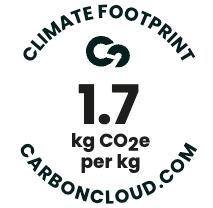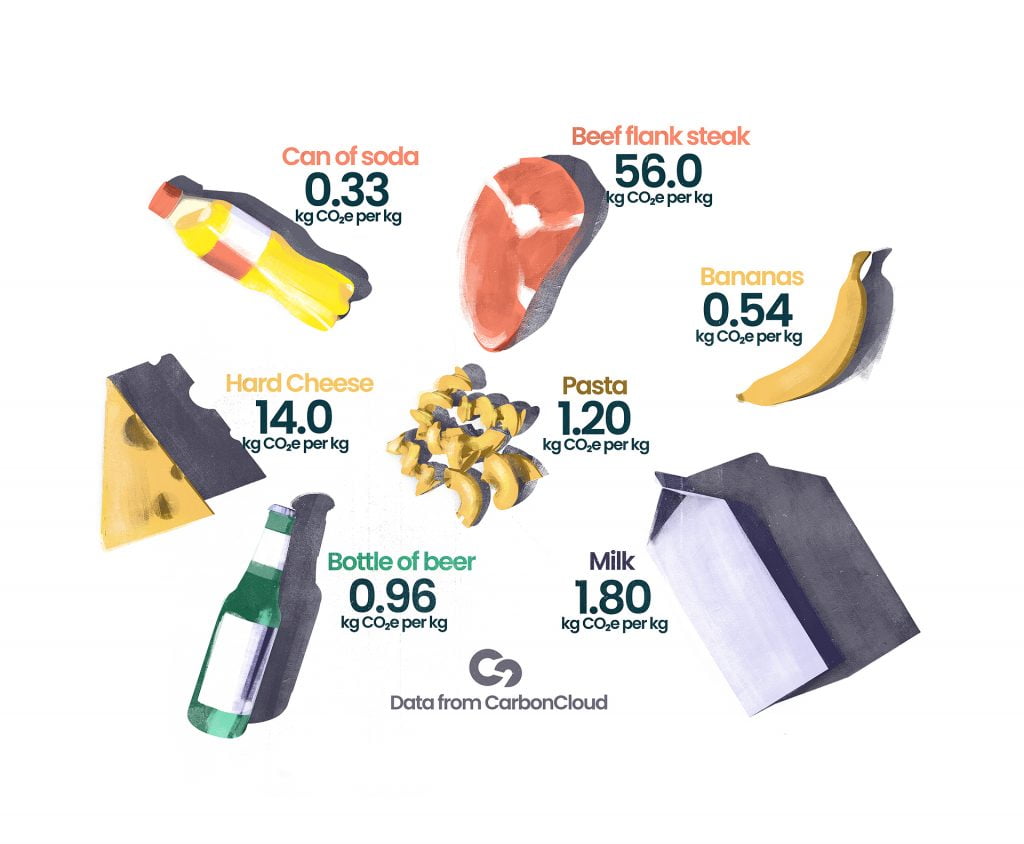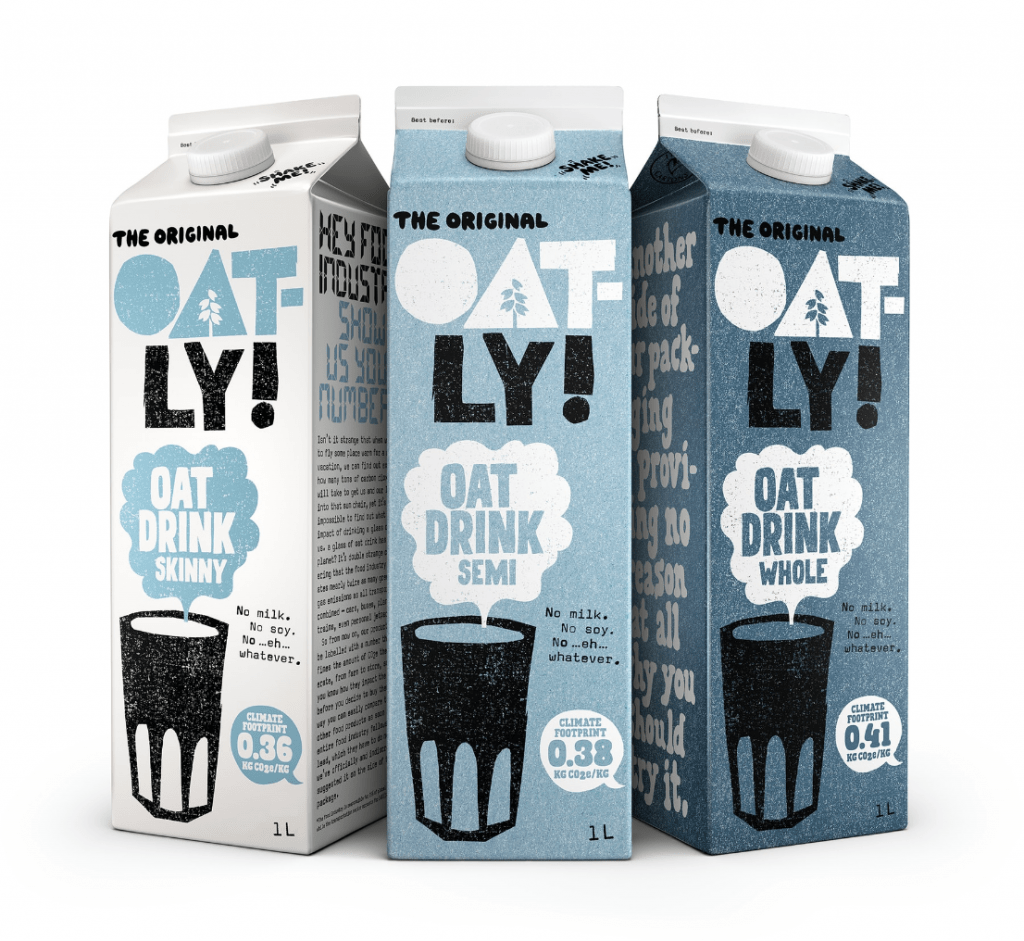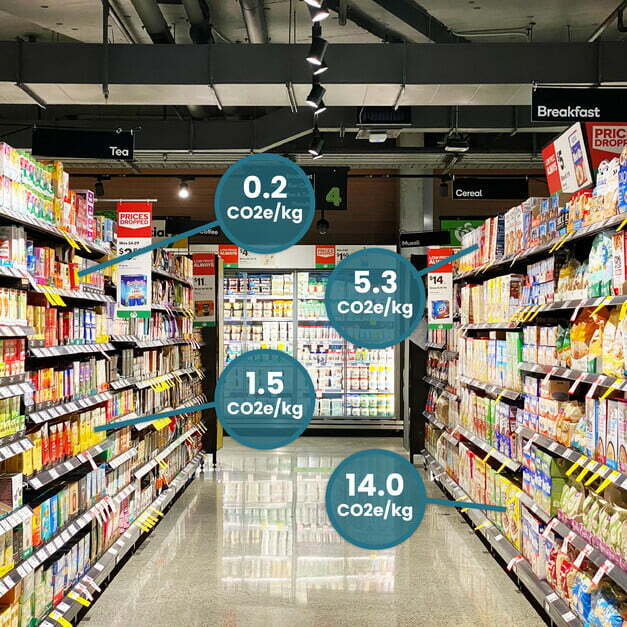Asking for a friend: What does the climate footprint label mean?
You have labeled your product and your friend /customer /marketing manager tells you: This is such a great initiative! But… what does the climate footprint label mean? What is CO2e? And, how do I make sense of the number? So glad your friend/customer/marketing manager asked! They can now read this and come back ready for enlightening discussions!
To give you some behind-the-scenes, at CarbonCloud we know that our climate footprint label takes the road not taken. If we would have chosen the easy road, we would have made the evaluation and decision for you (or your friend/customer/marketing manager) and the label would tell you “this is good; this is bad”. But we are not doing this for three reasons:
- We are not the type to evaluate or decide for others,
- Climate impact and performance is not as simple as good or bad,
- We signed up to play the game with integrity; and there isn’t a more forthright and transparent way to communicate your climate impact than the scientifically accepted way of quantifying it: kg of CO2e.
Does this mean we have to do more to explain it? No problem! As long as it brings us to the right place and it solves the climate change problem as effectively as possible. Plus, we love it so let’s get to it!


What is CO2e?
CO2e stands for Carbon Dioxide Equivalent. It is the value that captures the climate impact of different greenhouse gases – or as it is called, the Global Warming Potential (GWP). What stands out to most is that carbon dioxide is not the only gas with a warming effect on the climate. Particularly prevalent in the food industry, nitrous oxide and methane have a highly impactful warming effect. In fact, they are so impactful within the food industry that the term climate footprint encapsulates their effect with more clarity than carbon footprint.
Greenhouse gases warm the planet in different ways. Some are more potent and others have a longer lifespan in the atmosphere. However, these different greenhouse gases and their effect have an exchange rate: This exchange rate is CO2e.
Newsletter to-go?
Our special today is our Newsletter, including snackable tips, hearty climate knowledge, and digestible industry news delivered to your inbox
CO2e translates the warming effect of 1 kg of another greenhouse gas into kg of carbon dioxide emissions.
CO2e is the standard value used to refer to climate impact by the IPCC, Eurostat, and UNFCCC.
What’s weight (kg/pound) got to do with it?
As we measure the impact of gases emitted there are a few parameters to keep in mind: Gas is matter. Matter has mass. Mass is measured in kilograms (kg) or pounds. So, to measure the effect of the gases, we quantify them in weight – kilograms (kg) or pounds. Why do we need to quantify the gases? Imagine a recipe that tells you to use “flour”. How much?! Conversely, imagine the same recipe instructing you to use “500 grams”. Of what?! We need both a unit and a value to make sense of it and in the climate footprint label, CO2e is the value and kg –or pounds– is the unit of measurement.
What does the number mean?
This is the part where it gets challenging for most. Without a frame of reference, it is impossible to make meaning out of 3.2 kg of CO2e. However, what one can translate right away is that 3.2 is higher than 0.72 and comparison is a first step towards packing a symbol with meaning. As you explore more climate footprints (or when they are available on every product!) the numbers will quickly start to fall on your frame of reference at the same time that you create it. So you can help out your friend/customer/marketing manager by showing them a few benchmarks within their favorite food category, of the same interchangeable ingredients, or of your food product against a benchmark value.
Here are some examples:


On this one, you can rest assured that it goes faster than expected. All of us non-scientists at CarbonCloud attest to it – and so does Rob Malin, founder of the BiB wine, When in Rome:
“0.69 kilograms of CO2e per one kilogram of product”. That completely stuck in my head and I’ve been amazed myself at how quickly I began to benchmark it against other things. I think people will look at climate footprints the same way they look at calories or sugar levels.
Let’s run with Rob’s reference. Mentally travel back to the time when calories were introduced in the nutritional labels. It surely took consumers some friction with the numbers to be able to tell how many calories is a lot or little, which products and food categories are generally calorie-packed and which ones are calorie-light, where do the calories come from (protein, carbs, fat), which products have better energy performance than others – and of course, create their personal frame of how many calories they need to consume daily, based on their lifestyle. This is similar to climate footprint – but if you are eager to see the day after, where climate footprints are on every shelf, take a look at Jeff’s week of grocery shopping with a climate budget.
How much of the product does the number refer to?
Excellent and insightful question from your friend/customer/marketing manager! As with the calories, 300 kcal doesn’t say much – unless it specifies the amount of food that gives you these calories. So what the label shows is calories per 100 gr of product. Climate footprint is absolutely the same! Before we can quantify the climate impact of any product we need to know –and show– how much of this product emits this many kg of CO2e.
For example, the benchmark climate footprint of a bag of chips is 2.8 kg of CO2e per kilogram of product. Of course, the bag of chips does not weigh 1 kg so why not use the weight of the bag for purchase? You absolutely could! But keep in mind that when the goal is to compare products, the portion for purchase will most likely be different. To compare a 200 gr bag of chips and a 100 gr bag of popcorn, you would need to go into math mode – and who has the time for that? Moreover, for the same purpose of comparing, you will find this paradigm in pricing: The price tag usually shows the price per portion but also the price per kilo. This enables consumers to compare between products and choose more quantity for their buck.
What do the climate footprint components say in harmony?
Now that you know what all the elements refer to, what the label tells your friend/consumer/marketing manager is the warming effect of all the greenhouse gases emitted to produce, refine, package, and transport one kilo of product on the store shelf. Nakedly and transparently, the label shows the quantified climate impact of a kilo of product you are about to buy. Isn’t that the most straightforward and useful info you can have if you care about climate change?!
Since your friend/consumer/marketing manager can now keep up with the climate footprint label conversation, why not elevate it? Jump into why it’s not about the label and elevate the conversation from what does the label mean? to what does the label do? Enjoy the read!
Related Posts
Hey Oatly – Show us your climate strategy!
Oatly is a global inspiration regarding its climate strategy and communication. Since its initial boom, Oatly made noise challenging the entire food industry to show their numbers – and you may imag
Climate footprint labels: Why we use the number – and why the entire food industry will too.
The quantitative and specific climate footprint label may still be perceived as disruptive but we are certain that there simply isn’t a way that is more informative and transparent to communicate th
Little Freddie: A climate footprint growth spurt
Think of an adult foodie brand and 100 come to mind. Now think of a baby foodie brand – is it taking longer? We hand you the answer: It’s Little Freddie! When it comes to baby food, they believe o
🇺🇸 FTC Green Guides: From theory to practice
While the publication of the UK’s Green Claims Code has made some noise in the industry, the Green Guides from the US Federal Trade Commission (FTC) have been around quietly and humbly since 1992. O







